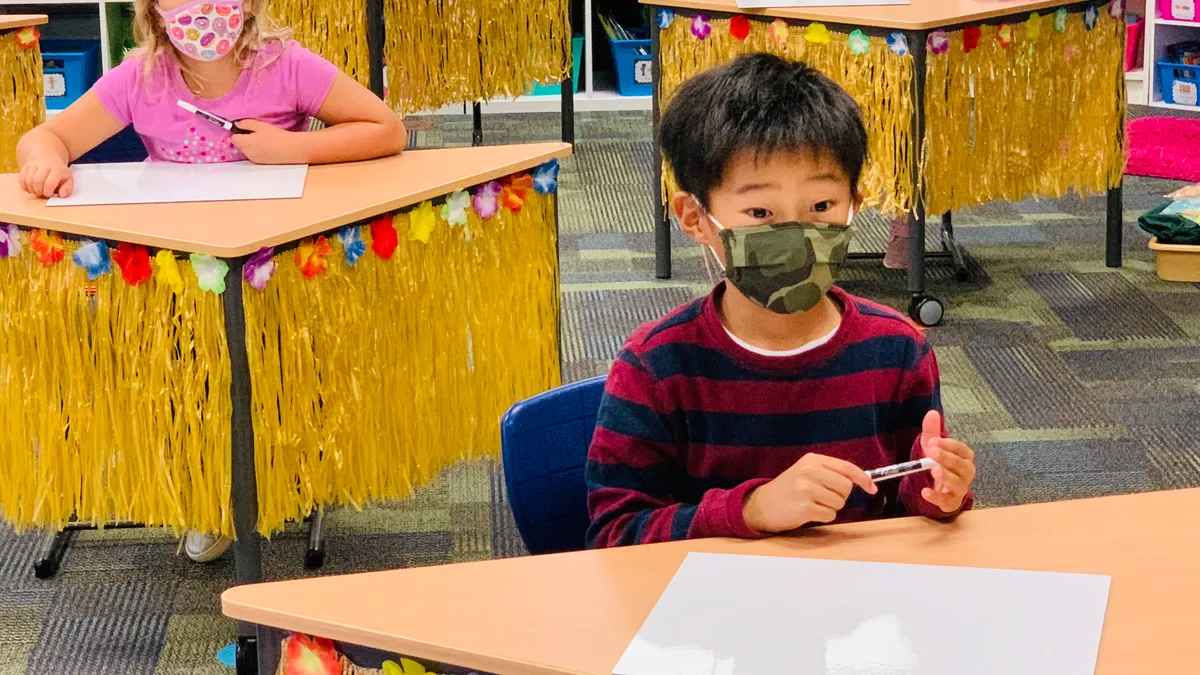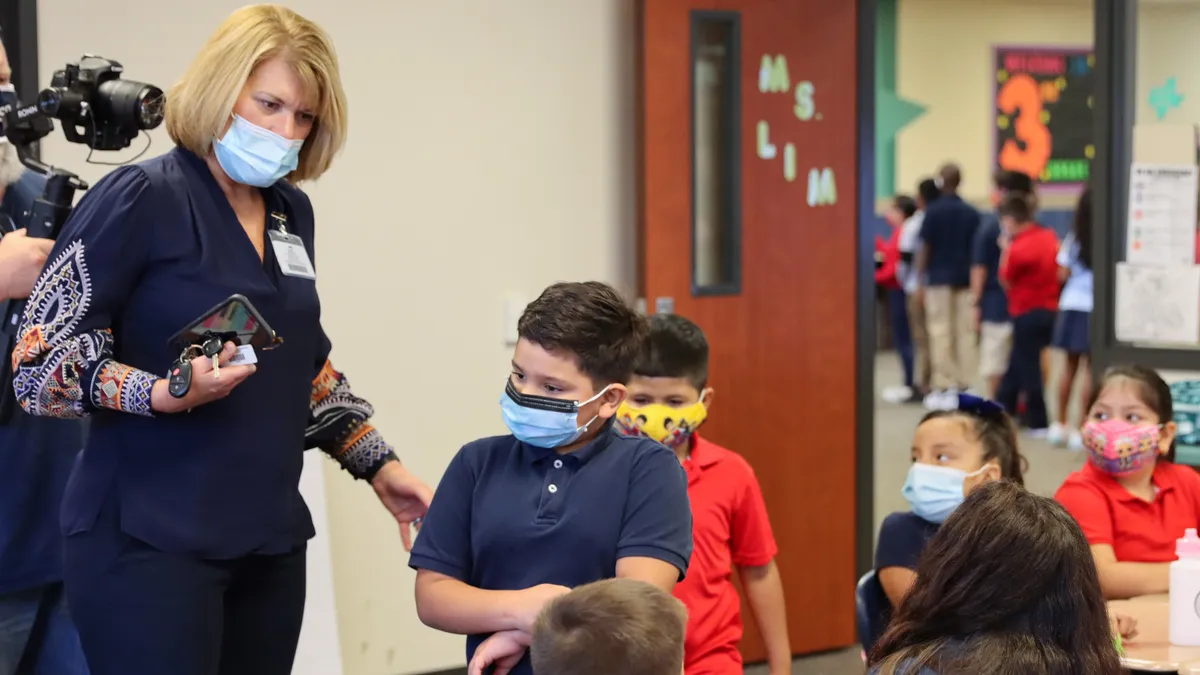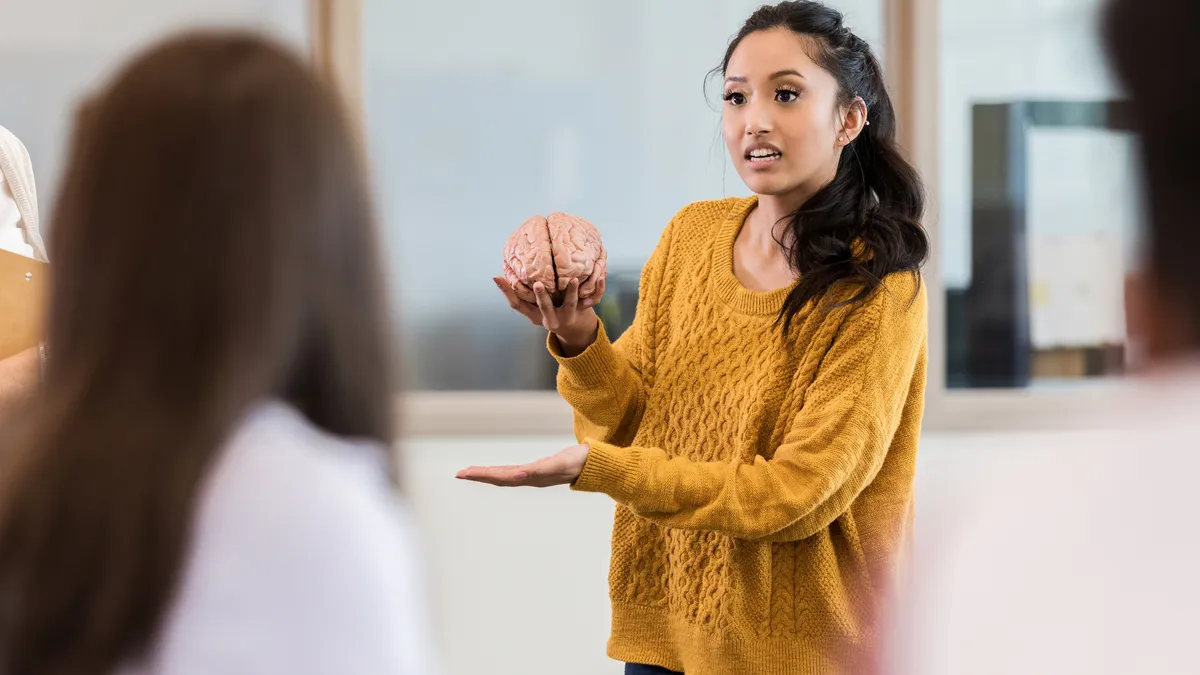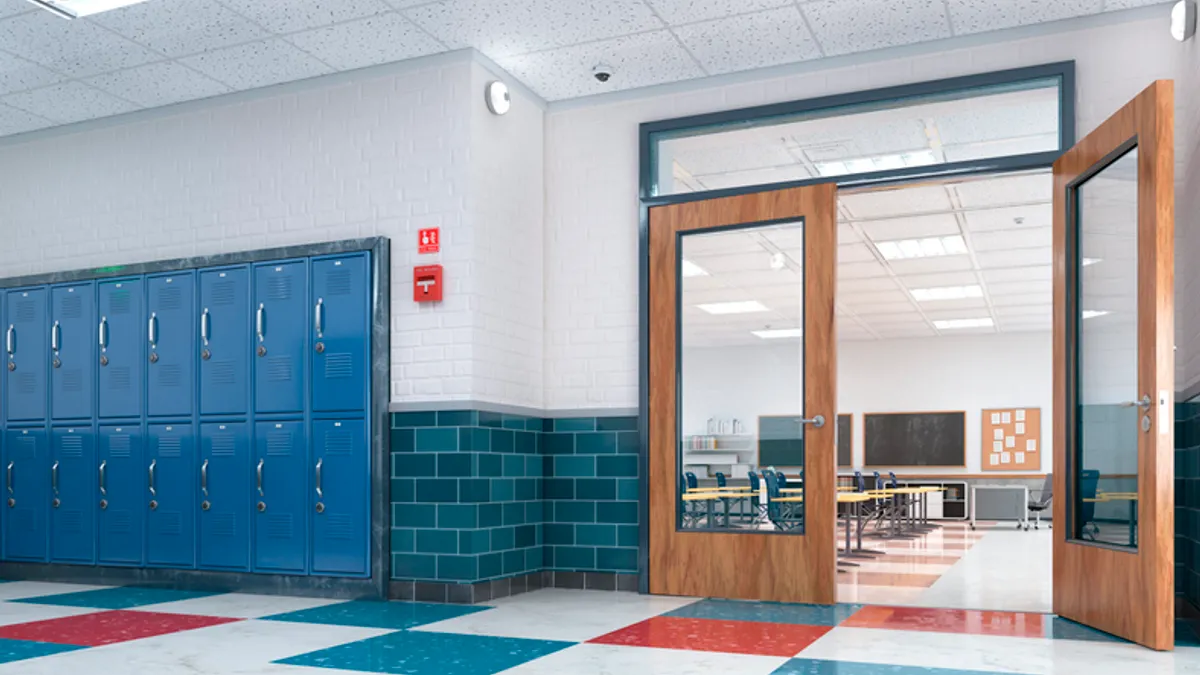The Novi Community School District in Michigan is no stranger to innovation.
The district, located outside Detroit, has had 3D printing capabilities for years. Students learn computer-aided design starting in kindergarten, 6th-graders spend an hour a week in a robotics lab, and the high school robotics team has won numerous awards.
But now, during the era of remote learning, when most educational institutions are focused on going digital in a high-tech world, Novi’s leaders have turned to a more old-school approach to help students keep up.
At the beginning of the school year, the district issued personal whiteboards and dry erase markers — along with devices — to all students, more than half of whom are attending fully online.
“What we were learning is that with a reliance on technology and the reliance on screens and so on, we’re taking away some of the really kinesthetic aspects — the touch, the feel, the see aspects — of what we do as educators that is so important,” said Assistant Superintendent for Academic Services RJ Webber, who spearheaded the initiative as a way to combat some of the challenges of remote learning.
In getting back to the basics and offering students the chance to have a 15”x12” version of a traditional classroom staple that’s small enough to fit in their backpacks, the district has seen a number of improvements — at least anecdotally — from enhanced student engagement to a boost in students’ self-confidence, particularly among more vulnerable learners.
“That human interaction between student and teacher — that development that occurs in-person is something that, yes, is very difficult to simulate, but we can try,” said Webber. “So, this is where the whiteboard piece comes in.”
Leveling the 'playing field'
The Novi Community School District is located in the northwest Detroit suburbs, about half an hour from the city.
Ranked the No. 1 school district in Michigan and one of the top in the country by Niche — in large part for its academics, according to a spokeswoman for the rankings site — Novi serves about 6,600 students. It’s one of the wealthiest districts in the state, with just 4% of students being economically disadvantaged as of January 2020.
Yet students aren’t without challenges. More than 30% of all students are currently enrolled or have gone through the district’s programming for English learners in the last four years, according to U.S. Department of Education data.
“Imagine placing yourself as a 5- or 6-year-old coming from Japan,” where many of the district’s Asian students, who make up 47% of the student population, are from, Webber said. “Your parents or your dad has been assigned to work in America for four to five years, and everything is new. So, if there’s a way that we can provide further bridges for kids to feel comfortable with that and be able to show their work or maybe at least a little bit of what they’re thinking, or to draw it out on a whiteboard, that’s something that’s important as well.”
Kavitha Yandluri, whose family moved to the U.S. from India four years ago and speaks Telugu at home, has seen firsthand how her two daughters use their whiteboards while she supervises their schoolwork at home.
Both girls, ages 5 and 7, are considered English learners, she said, and have used it in their ESL classes as well as in art and reading. When a teacher asks them to show their work, they write on their whiteboards and then hold them up to their screen.
“If they were drawing [on] the paper, they would not be seeing it properly,” Yandluri said. “Really, it’s helpful to them.”
Teachers who spoke to K-12 Dive said the whiteboards have solved practical issues, such as when a student’s microphone goes out and they need to communicate with the teacher. But from their perspectives, the tools have also helped students feel more empowered because they’re able to show their work.
“Something like a whiteboard seems simple, but it’s definitely something that we can utilize,” said Lisa Sears, a math intervention specialist whose students are typically two or more grade levels behind. She’s noticed it helps keep students engaged and gives them something to do other than sitting and staring at a screen.
Meghan Barnauskas, a math teacher at Novi Middle School, said some of her students struggle with technology or executive functioning, so the whiteboard is a good back-up and tool to stay organized. It keeps them from shuffling a bunch of papers or switching between computer tabs.
“It kind of levels the playing field for a lot of them,” she said.
Barnauskas said she was excited when she found out about the whiteboard initiative because before the pandemic, she typically used a whiteboard in her classroom and had students pass it around.
“Now I feel like I can go back to things that I would normally use in my classroom and I know normally work for student learning,” she said.
“It definitely does seem old school to say that these whiteboards and markers is what’s going to do the trick here,” Sears said. “But I just really think there needs to be a balance between the digital and tangible tools in their hands.”
Innovative solutions
That was precisely the motivation for Webber, who thought of the idea on a run shortly after the pandemic closed schools. He was trying to think of a way to combine digital learning tools with more analog ones.
A few weeks before, he’d been in Denver for a conference, where he’d seen someone with the mcSquares whiteboards and thought they looked interesting.
Compared with other projects the district is working on, including a rollout of Micro:bit coding devices to all 5th-graders in the near future, giving each student a $29.99 whiteboard may not seem all that innovative, Webber said.
“You might say well, that’s kind of odd in the sense of what we’re talking about with whiteboards and the digital and analog, and I would say not odd at all. That’s the point — this idea of melding, mashing, putting all of these different things together to provide opportunities,” he said.
In doing so, he hopes Novi can be an example to other districts.
“It’s not lost on me that I have the privilege to think about these things because I don’t face the immediate concerns that many of my colleagues face around the country [with] around 90% free and reduced lunch or what have you,” Webber said. “How do we use that privilege to help other people see what can be done and help them get there? Something like whiteboards, which are inexpensive, or Micro:bits are things that school districts could do to provide opportunities for their students at a relatively low cost.”
There’s also a life lesson in the whiteboards he hopes students will realize — that innovation is more about trying than success.
“People think innovation is something that is always successful. They point to Elon Musk or whatever,” he said. “Just keep moving. Keep trying. Sometimes you have to erase the whiteboard, and sometimes you draw something or come up with something that’s so absolutely amazing and you get to share that whiteboard where you don’t erase it and you keep it forever, so to speak.”






 Dive Awards
Dive Awards















